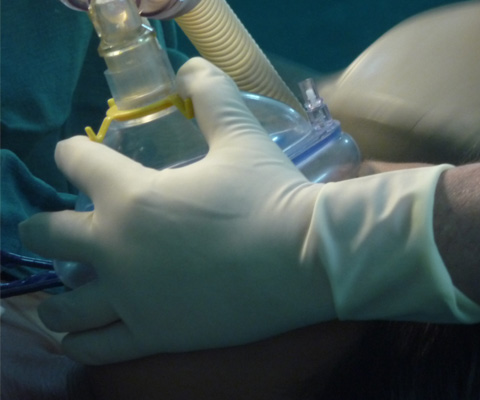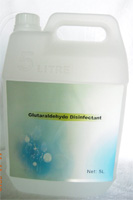Three Steps
Cleaning airway equipment prior to reuse involves three steps:
It is very important to perform all three steps to make equipment safe for future patients and for the staff that handle the equipment.
Equipment is easier to clean if blood/sputum is not allowed to dry, so wipe equipment such as a laryngoscope blade after use with wet gauze or soak it in water before decontaminating it.

Step 1: Decontamination
To kill the most harmful bacteria and viruses
This process kills bacteria and viruses including Hepatitis B, Hepatitis C and HIV.
The purpose of this step is to make the equipment safer when handled, by reducing the risk of infection to the person cleaning it.
Decontamination technique:
|
Put equipment in a bucket full of 0.5% chlorine
solution (sodium hypochlorite 'bleach') for 10 minutes:
This is the cheapest and most rapid decontaminant. It can be used
on most equipment but rubber and metal should not soak for over 20
minutes otherwise they will discolour or rust
Alternatives are:
|
Step 2: Cleaning
To remove dirt
Cleaning is a process to remove visible dirt including dust, soil, blood or other body fluids. It also removes up to 80% of bacteria and viruses.
Proper cleaning is vital otherwise disinfection or sterilization will be much less effective.
Cleaning technique: Either of the following:
Automatic cleaning
Manual cleaning
|
 |
Step 3: Disinfection
This eliminates 95% of microorganisms, all except some bacterial spores, such as Clostridium, as they have a thick cell wall
Is that good enough?
This is adequate for most airway equipment as it will usually only be touching mucous membranes or broken skin, but not entering normally sterile tissues.
Disinfection technique: Options include:
|
|
Step 3: Sterilization
To eliminate all germs including spores
This eliminates 100% of microorganisms including bacterial spores
Spores do not cause respiratory infection, so this is not usually necessary for airway equipment (even though many items can be sterilised). It is necessary for equipment which penetrates through normally sterile tissue, such as kits for needle cricothyroidotomy and surgical cricothyroidotomy.
Sterilization technique:
|
Two different types of autoclave
|

